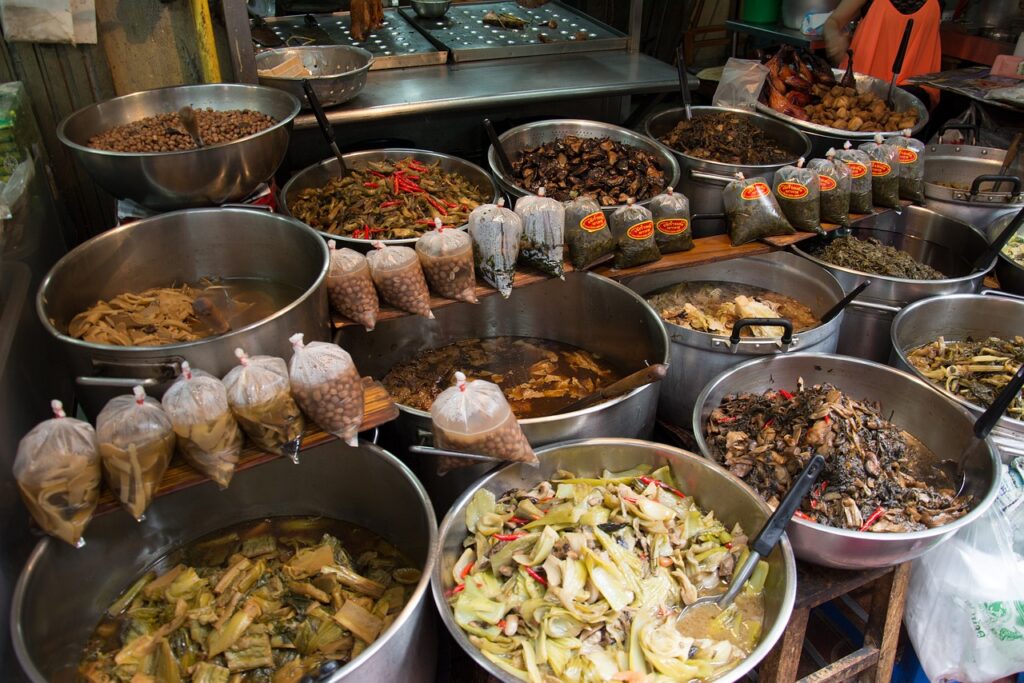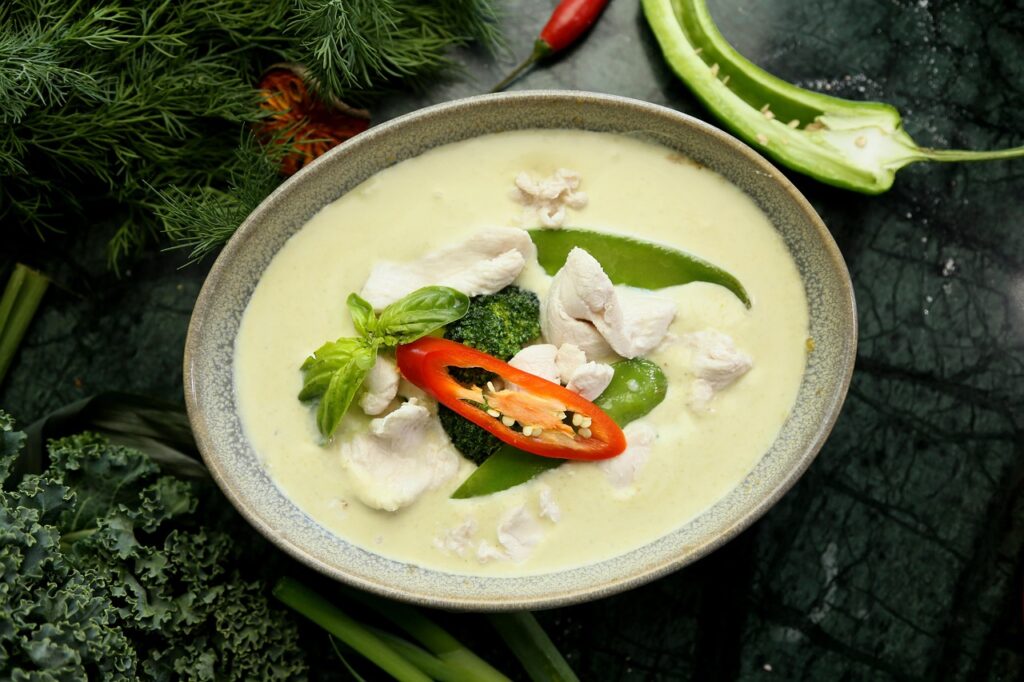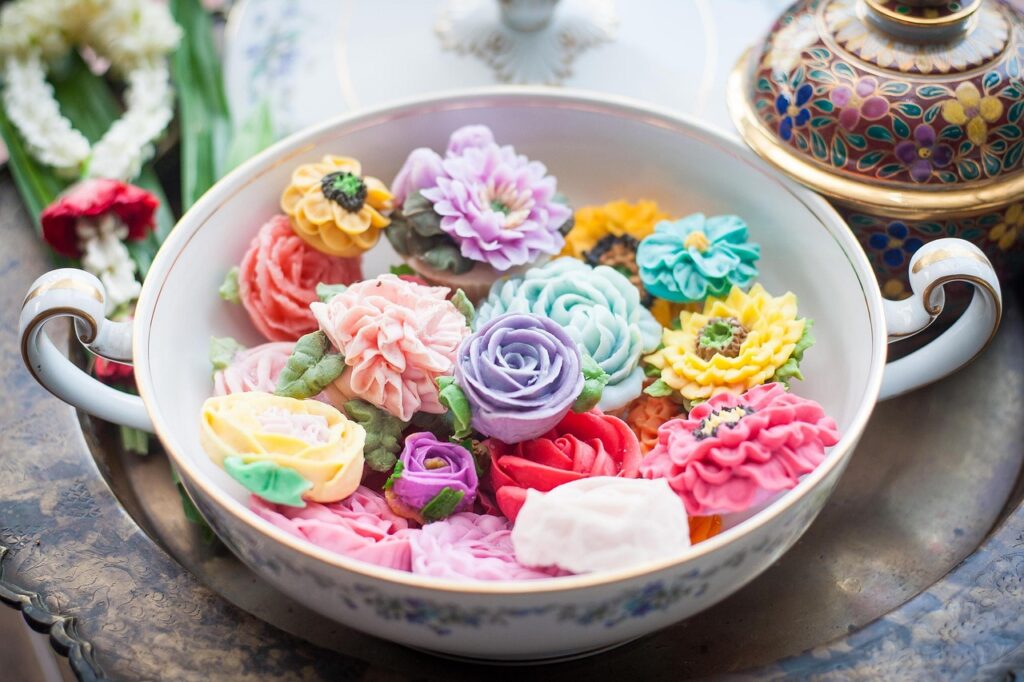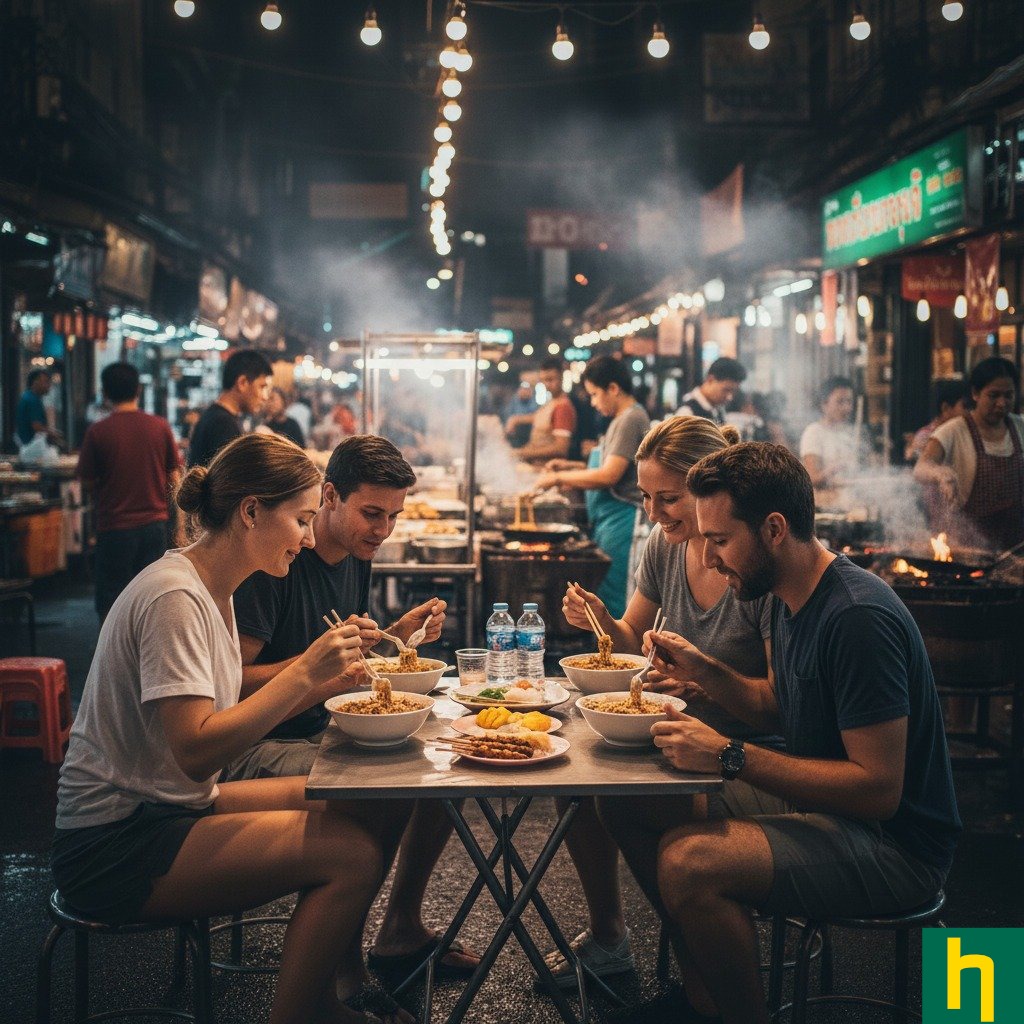Thai food is a source of immense pride for the Thai people. Thai food heritage is where secret recipes are passed down through the generations. It connects different parts of the country through unique and regional foodways. Far from being a fixed tradition, Thai cuisine is a fluid art that has always evolved with the times.
I’ve been eating Thai food since I was a kid. I’ll never forget my fiery introduction. My first spoonful of Tom Yum at the local Thai restaurant almost burned my tongue clean off – far above my chilli tolerance at the time.
That special connection led me to get involved with a Thai restaurant for several years. That environment offered me a behind-the-scenes look at the heart of a Thai commercial kitchen. And after many years, my fascination with Asian cuisines led me to Chiang Mai, where my interest in Thai food only exploded.
Having just a little bit of knowledge of this tasty cuisine, coupled with the ability to eat it like a local, will endear you to a whole lot of strangers on your travels through Thailand. So, let’s embark on this culinary journey through Thai food heritage to discover not just recipes but the soul of a nation defined by its food.
Thai Food Heritage: Regional Culinary Identities

The true magic of Thai cuisine lies in its diversity. Each of Thailand’s main regions – the central plains, the northern hills, the northeastern plateau, and the southern peninsula – has cultivated a culinary landscape all of its own.
The creamy curries of the central plains, influenced by the sophistication of the royal court, to the flavours of Isan boast foodways shaped by geography, climate, and culture. The slow-cooked, spice-laden curries of the south bear the fragrant imprint of maritime trade and the Malay Peninsula. The food traditions of northern Lanna cuisine have been very much influenced by Burmese and even Yunnan cooking styles.
Each region of Thailand offers a distinct culinary journey. Exploring these regional differences is key to understanding the heart and soul of Thai food.
Central Thailand
The heartland of Central Thailand is one of fertile rice paddies fed by winding rivers. Thai royal court life shaped its culinary history within its opulent walls. This region distinguishes its food through its elegance and balance, which often infuses coconut milk into a sweet, sour, salty, and spicy interplay.
Think of tom yum goong, that quintessential Thai soup. While variations exist nationwide, the central Thai rendition showcases a clearer, more fragrant broth, with fresh prawns and the tasty punch of galangal, lemongrass, and kaffir lime. The balancing of these flavours was honed in the royal kitchens, where attention to detail and the finest ingredients were paramount.
Northern Thailand
Journey north into the mountain regions, and here you’ll find a cuisine influenced by neighbouring Myanmar and Laos. Sticky rice reigns supreme, often steamed in woven bamboo baskets and enjoyed with intensely flavoured chilli dips and grilled meats.
Khao soi, a rich curry noodle soup, perfectly sums up this regional identity. This northern favourite, Khao Soi, features tender egg noodles in a coconut-milk-based broth mixed with curry paste and topped with crispy fried noodles. The Chin Haw, Muslim traders from Yunnan province in China who settled in northern Thailand, are believed to have brought this famous dish with them.
Another northern gem is Gaeng Hung Lay, a pork belly curry simmered for hours with ginger, turmeric, and tamarind. Unlike its coconut-milk-rich central counterparts, gaeng hung lay has a deeper, more earthy complexity. It’s a dish that speaks of slow-cooking traditions.
Northeastern Thai Food (Isan)
On the Khorat Plateau, Isan food is one of fiery chillies, fermented fish sauce (pla ra), and tangy lime juice. Like its northern Thailand neighbour, sticky rice is the staple and is eaten by hand alongside spicy, flavoured salads.
Isan is the land of Som Tum. Tart green papaya is pounded in a mortar with chillies, garlic, tomatoes, peanuts, dried shrimp, and a dressing of pla ra, creating a refreshing yet often seriously spicy dish.
Then there’s Larb, a minced meat salad seasoned with lime juice, fish sauce, roasted ground rice, and herbs of mint and cilantro. Each bite has depth, the toasted rice adding a nutty crunch. And no Isan meal is ever complete without Kai Yang – grilled chicken marinated in garlic, coriander root, and fish sauce; its smoky aroma can be smelled throughout the region.
Southern Thai Cuisine
Journey south to the Malay peninsula, and the cuisine is intertwined with the bounty of the seas and neighbouring Malaysia. Coconut milk is a frequent companion in Southern Thailand, lending richness to fiery curries.
Consider massaman curry, a dish with a history. Originating with Persian traders arriving in the port cities of the south, it’s a complex curry featuring tender chunks of meat (often beef or chicken), potatoes, peanuts, and spices such as cardamom, cinnamon, and cloves, cooked in a rich coconut milk base.
Gaeng Tai Pla is not for the faint of heart. It has even been voted the world’s worst dish. Not that such trivialities should put off the intrepid foodie traveller.
Fiercely spicy and seriously flavoured, this fish curry is made with fermented fish entrails (tai pla). Served with a plate of fresh vegetables, it’s a true taste of the culinary traditions of the South.
The Elegance of Royal Thai Food Heritage

For centuries, a distinct culinary tradition flourished. Royal Thai cuisine, or Aharn Chao Wang. The use of the finest, often rare, ingredients, immaculate presentation, and balance make it a cuisine that reflects the old Kingdom of Siam’s prestige.
While Songkran, the Thai New Year, is famed for its water fights, food also plays a major role in the festival. It consists of perfectly cooked jasmine rice in cool, fragrant water, infused with perfectly smelling jasmine blossoms. People serve it with dishes of carved vegetables stuffed with seasoned meats, sweet shredded pork, and crispy shrimp paste balls.
Prepared by royal chefs, Mee Krob has been elevated to an art form. Delicate rice vermicelli, fried to a crisp and tossed in a tamarind-based sauce, and studded with shrimp.
Fruit carving is the hallmark of Royal Thai cuisine. It’s more than just a garnish; chefs spend years mastering its intricacies, making it a highly respected skill.
It’s more than just a garnish; chefs spend years mastering its intricacies, making it a highly respected skill. These edible sculptures are an integral part of the royal dining experience.
Royal dishes are prepared using techniques that enhance natural flavours without overpowering them. The use of premium ingredients, sourced from specific regions known for their quality, is paramount. Presentation is key, with dishes arranged with an eye for beauty.
While these elaborate dishes were once exclusive to the royal court, their influence has seeped into everyday Thai life. It has inspired chefs to perfect their culinary wizardry. Today, while you might not find Khao Chae served with the same level of detail in every restaurant, its essence remains. It can still be seen in the garnishes that brighten up even everyday Thai dishes.
Thai Street Food

Thai street food is more than just a convenient and inexpensive way to eat; it’s a deeply ingrained phenomenon. The beauty of Thai street food lies not only in its variety but in its accessibility. People from all walks of life gather to enjoy a quick and tasty meal. The street food scene is an energetic one, fueled by the Thais’ love of good food and increasingly by the adventurous foodie traveller, too.
Many street food dishes have humble origin stories, evolving from simple meals prepared with whatever ingredients were at hand. Their popularity has grown organically, with recipes passed down from one generation of street food vendors to the next. Some vendors have become local legends with their stalls drawing long queues of devoted customers.
Exploring Thailand’s street food is an adventure. Each neighbourhood or market has a different culinary take. Mango Sticky Rice (Khao Niao Mamuang), a simple dessert, sums up the magic of Thai street food. Sweet, glutinous rice, steamed and drenched in creamy coconut milk, and slices of ripe, fragrant mango. It’s a sweet and satisfying treat that’s as common a sight as the tuk-tuks.
Then there are the legendary Boat Noodles (Kuay Teow Reua). Traditionally sold from small boats on the Bangkok canals, these noodle soups are a rich, dark broth, thickened with pork blood, tender meat, and a scattering of fresh herbs.
Let’s not forget the Roti carts, their griddles sizzling with thin, crispy pancakes. From the classic version, drizzled with condensed milk, to fillings of banana and Nutella, they’re satisfying treats, prepared with theatrical flair. And while it’s roti, they’re a world away from the roti-selling street stalls of neighbouring Malaysia.
Essential Ingredients of Thai Food
For centuries, rice has been the lifeblood of the Thai people. Different regions boast their varieties, with distinct textures and aromas. Fragrant jasmine rice is perhaps the most famous. But venture north, and you’ll encounter sticky rice, its texture perfect for scooping up flavourful nam priks and grilled meats.
The trinity of galangal, lemongrass and kaffir lime forms the backbone of all Thai cooking. Galangal isn’t just a spice; it’s been used in traditional Thai medicine for its digestive properties. Lemongrass, with its citrusy aroma, wards off insects. And fragrant kaffir lime leaves add additional smell and flavour to curries and soups.
And although Thai food is famed for its spicy chillis, it’s a relatively recent arrival. Chilli peppers were first introduced by the Portuguese in the 16th century. Before chilli hit the shores of Thailand, black pepper reigned supreme.
Yet, in the centuries since its arrival, it’s been embraced with such fervour that it’s hard to imagine Thai food without its spicy heat. From the tiny, bird’s eye chilli to the larger, milder varieties, each adds a different dimension of spice. The skilful use of chillies, balancing their fire with other flavours, is a hallmark of Thai culinary artistry.
Then there’s fish sauce. This pungent liquid isn’t just a condiment; it’s a foundational ingredient. Made from fermented small fish, its production is a time-honoured process with different regions and producers developing their distinct flavour profiles.
Thai Food Heritage and Religious Festivals

In Thailand, festivals are colourful expressions of faith, tradition, and community. And food plays a starring role. From national holidays to local temple fairs, the preparation of specific dishes is synonymous with certain events.
Songkran, the Thai New Year, might be a festival famed for its water fights, but beyond that, food plays a major role. Dishes like Khao Chae are symbolic of purity and renewal.
During Loy Krathong, people set adrift decorated floats with candles and flowers on the nation’s waterways. While the spectacle is stunning, food vendors line the riverbanks offering the widest variety of traditional treats.
And at Buddhist Lent (Khao Phansa), while devout Buddhists abstain from indulgences, food remains central to merit-making. Families prepare offerings for monks, and they gather for special vegetarian meals. This shows us all that Thai cuisine isn’t just famed for skewered meats.
Local temple fairs (ngan wat) are another example of food and festivity. These lively events feature traditional music, games, and, most importantly, rows of street food stalls. You can sample regional specialties here that you might not find elsewhere.
The act of sharing food during Thai festivals embodies the spirit of the Thai people. Offering food to monks is a significant act of merit-making, while sharing meals with family and friends reinforces social connections.
Preserving Thai Food Heritage Traditions
In a rapidly modernising world, global forces often overshadow local traditions. Thankfully, chefs, both in Thailand and abroad, are championing regional specialties, showing us the incredible diversity of Thai cuisine beyond the familiar.
There’s a focus on local ingredients, supporting small-scale producers, and promoting sustainable agriculture. There’s also a recognition of the importance of passing down culinary knowledge to younger generations. Cooking schools incorporate traditional Thai cooking techniques into their curriculum, ensuring these skills aren’t lost.
Preserving Thai food heritage isn’t just about flavours; it’s about safeguarding cultural identity. The recognition of Thai cuisine on the world stage also plays a role in preservation. Ultimately, the efforts to preserve Thai food heritage invite us all on a delicious journey of discovery. Beyond Pad Thai and Green curry lies a world of regional flavours. By embracing this diversity, we not only savour one of the finest cuisines but also contribute to its legacy.
Thai Food Heritage FAQs
How did Thai cuisine originate, and what influenced its development?
Thai cuisine has a long and layered history, with its origins tracing back to people who migrated from southern China. Over centuries, it was shaped by influences from neighbouring countries like India, with its curries and spices; China, which introduced stir-frying and noodles; and later, European traders, who brought ingredients like chillies from the Americas. This rich fusion of culinary traditions and ingredients created a unique and balanced flavour profile.
What are the key regional differences in Thai cuisine?
Thailand’s food is divided into four distinct regional cuisines, each shaped by local geography and culture:
- Central Thai cuisine is known for its harmony of flavours—sweet, sour, spicy, and salty—and its use of coconut milk.
- Northern Thai food, influenced by Myanmar and Laos, is less sweet, more herbal, and uses sticky rice as a staple.
- Isan cuisine (Northeastern) is bold and fiery, with a heavy use of fermented fish sauce (pla ra).
- Southern Thai cuisine is the spiciest, with a focus on seafood and thick, coconut-based curries, influenced by Malaysian cooking.
What are the five fundamental flavours of Thai food?
The art of Thai cooking is defined by the balanced combination of five fundamental flavours in nearly every dish: sweet, sour, salty, spicy, and creamy/bitter. This harmony of tastes creates a complex and deeply satisfying experience. A dish is often considered incomplete if any of these five elements are missing.
What is the role of Royal Thai cuisine and street food?
Royal Thai cuisine (Aharn Chao Wang) represents a highly refined and intricate culinary tradition that was once exclusive to the royal court. It is characterised by its meticulous preparation, fine ingredients, and beautiful presentation. In contrast, Thai street food is a vibrant, accessible, and essential part of everyday life, offering a quick and affordable way for everyone to enjoy a huge variety of popular dishes like Pad Thai and Mango Sticky Rice.
How is Thailand’s food heritage being preserved today?
Today, the heritage of Thai cuisine is being preserved by a new generation of chefs and food enthusiasts who are committed to passing down traditional recipes and techniques. There is a growing emphasis on using local ingredients, celebrating regional diversity, and educating both locals and tourists.

